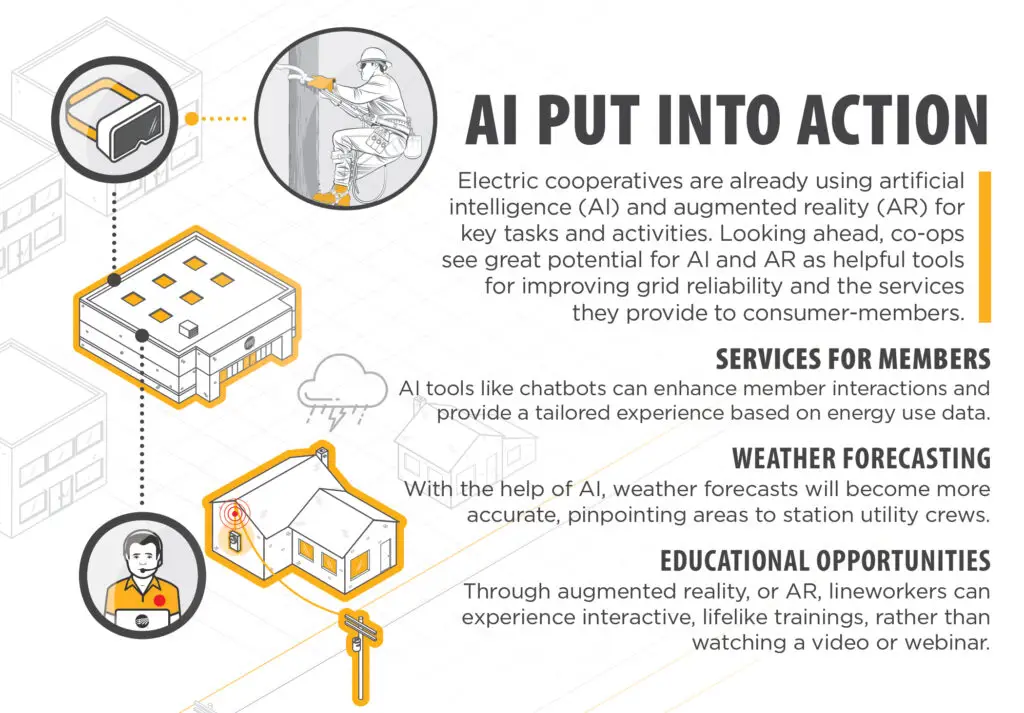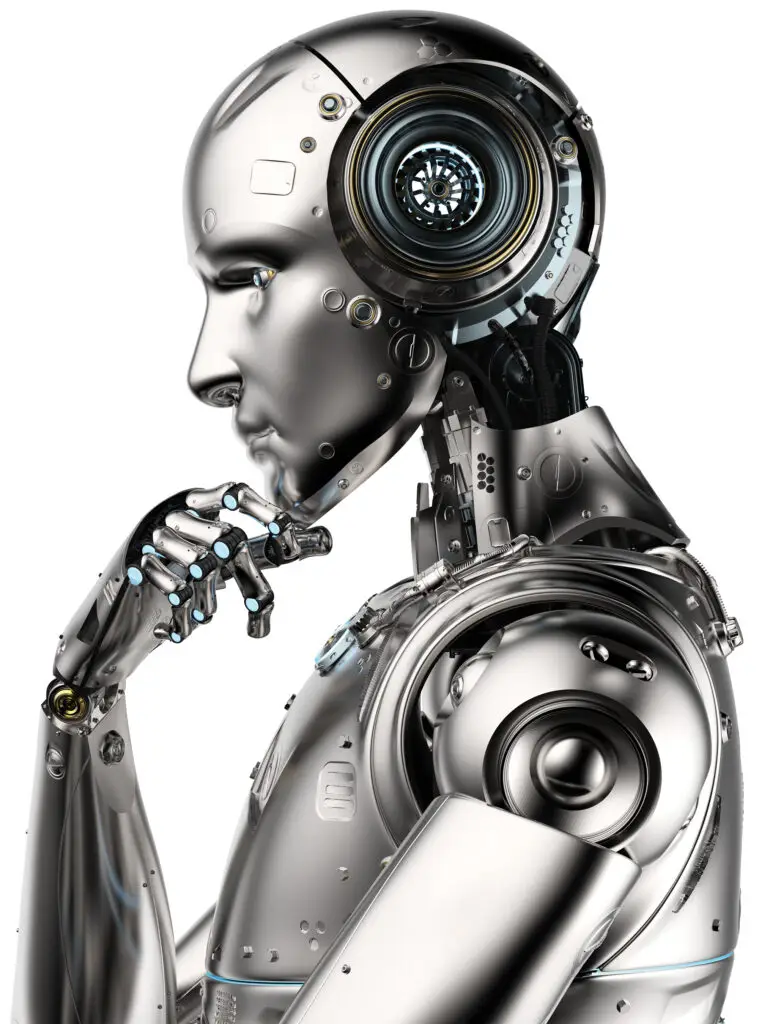By Scott Flood
Unless you’ve just awakened from an especially long nap, you’ve probably been hearing plenty about artificial intelligence (AI). It’s likely that much of what you’ve heard is either exciting or terrifying. Movies and TV offer up paradises in which technology frees us from daily drudgery––and frightening scenarios in which machines become our overlords.
Venkat Banunarayanan smiles when asked if popular media’s takes on AI are accurate. “We’re at the stage of discovery with AI,” he says. “There’s a lot more buzz than reality at this point, and we have a long way to go.”
As the vice president for Integrated Grid Business & Technology Strategies for the National Rural Electric Cooperative Association, Venkat spends some of his time exploring possible use cases with AI, augmented/virtual reality (VR) and other promising technologies, while considering how they might improve the way electric co-ops serve their consumer-members. “Can AI do things better? Can it handle some of the tasks we have to do today? Can it make decisions for us? The answer to those and most other questions is the same: maybe.”

Industry experts agree it’s impossible to guess where AI will be in another decade or two, but it’s currently not as powerful as Hollywood and the media seem to think.
AI is currently being incorporated for specific tasks and activities, including automated solutions like chatbots that are capable of answering common questions. AI also has the potential to be paired with data analysis, such as retailers using data to better predict customer needs.
Despite what you may have heard, AI is not capable of thinking on its own. The functionality greatly depends on programming, how the tool is trained to handle specific tasks and the level of data being fed into the system. AI revolves around learning and adapting to decision-making.
Because these new technologies interface with internal and external systems, Venkat stresses the importance of strong cybersecurity. “We need to make sure hackers can’t influence systems,” he warns. “When we consider advancements like AI, we need to ensure protection of personal, critical infrastructure, proprietary and confidential data, too.” Maintaining robust cyber-hygiene is very important and necessary to deploy any technology in a reliable and safe manner––AI is no different in this regard.
As electric cooperatives explore the possibilities of AI, they will focus on underlying needs rather than the technology itself. Examining better ways to accomplish tasks and obtain desired results will guide co-ops as they consider AI tools for more efficient processes and approaches.
Despite all the hype, today’s AI is mostly being used to make incremental improvements to existing products and services. That’s how electric co-ops are likely to experience the growth of AI in the foreseeable future. For example, the next generation of smart meters might incorporate AI tools that help homeowners better manage their energy use. AI-based systems may also be used to improve management of the nation’s power grid, spotting potential problems before human operators can. Electric co-ops could use chatbots to help answer members’ questions and requests more quickly. Weather forecasts are likely to become more accurate, pinpointing the areas most likely to experience damage so crews can be stationed there.
Another promising technology currently explored is augmented reality (AR), and some co-ops are already testing it, particularly in educational and training opportunities. For example, apprentice lineworkers can become comfortable manipulating AR and VR versions of equipment before working with the real thing. Instead of watching a video or a webinar, lineworkers are able to interact with what they’re doing. For example, a safety training can simulate a hazardous situation, like the aftermath of an ice storm or hurricane, providing lineworkers the opportunity to prepare for the real thing.
AR blends VR with the world around us. One day soon, a lineworker may look up at a failed transformer atop a power pole. Their safety glasses will instantly recognize the type of transformer, its exact location and when it was installed before displaying a checklist of the equipment the lineworker may need, a guide to diagnosing common problems, and even 24-hour access to technical experts.

Ultimately, the adoption of AI, VR, AR and other promising technologies share one goal for electric co-ops. From solving outages more quickly, to allowing greater control over energy use, to lowering the cost of service, tomorrow’s innovative technologies will continue to help co-ops enhance the services they provide to their local communities.ν
For more than four decades, business writer Scott Flood has worked with electric cooperatives to build knowledge of energy-related issues among directors, staff and members. Scott writes on a variety of energy-related topics for the National Rural Electric Cooperative Association, the national trade association representing nearly 900 electric co-ops.




